KJ Callihan
The Numerous Uses of Fragrant Moroccan Argan Oil
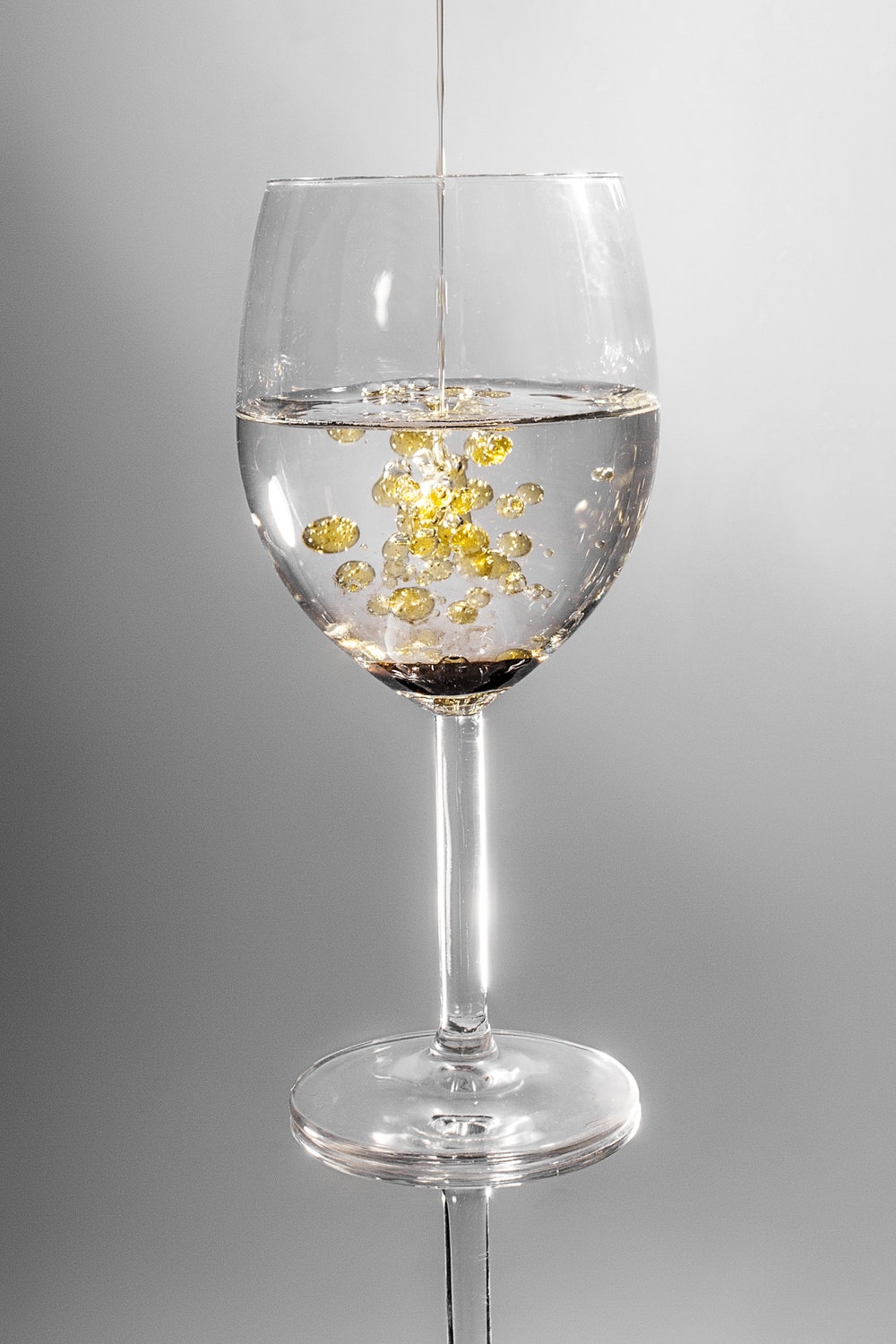
What is argan oil and where does it come from?
Ever tried argan oil? I’ve had it in two forms of hair product (both were hair conditioners, different kinds) so far since hearing about it, and oh. my. goodness. The stuff is phenomenal. Not only does it smell like heaven, but it leaves your hair feeling like silk. Naturally, my mind wants to know 1. what’s in it, and 2. how did it ever get here to my little hometown salon in the tiniest city in the midwest? Come on, let’s take a look!
From high in treetops of the Moroccan Argan Forest comes this impressively versatile oil
According to Wikipedia, argan oil is made from the kernels of the argan tree, native to Morocco. It’s first use isn’t to slather in your hair, oddly enough, either. Turns out it’s actually edible — used for dipping bread into or to toss in with your pasta or salads, similar to olive oil. It’s cosmetic purposes are actually secondary – and not only for the hair either!
It’s full of nutrients and a little goes a loooonng way
In any case, the oil is full of vitamins A and E, as well as linoleic acid, antioxidants, and Omega 6 fatty acids. And a little goes a long way, too. You really only need one or two drops per daily use to get the results desired, so even though it’s a bit on the expensive side, even a small container usually lasts a long time.
How is it made and…wait, why are goats in the trees?
These slow-growing trees are so revered that in 1998 the Argan Forest was declared a Biosphere Reserve By UNESCO.
To make the fragrant oil, workers must extract it from the kernel inside the nuts of the argan fruit. Now, one way to do this is to have goats climb the argan trees (The trees are so beloved to the region that the Argan forest was declared a Biosphere Reserve by UNESCO in 1998), eat the fruit and leave behind the partially digested kernels in their excrement, which you’ll collect later for processing. However, since most prefer not to do it this way, they must first get into the fruit of the tree themselves and dig into the pulpy flesh, which contains the nut and then within that, the oil-rich kernels — between one and three kernels per piece of fruit can be found usually.
Cracking the nuts and fair trade argan oil
To do this, they first dry the argan fruit, then remove the pulp and crack into the nuts. The cracking process is still done by hand as mechanized versions attempted were unsuccessful. This cracking procedure makes for a long work day and time-consuming, laborious endeavor. (For this reason, we must ensure the Berber women who typically perform these tasks see enough of the profits from the sale of the finished products. With this in mind, take a peek at six of the best fair trade brands of argan oil highlighted here.)
Roast the kernels for cooking oil, or go without the roasting for cosmetic products
Then, once cracked, they roast the kernels they plan to use for cooking oil. Then, finally, they grind and press them, filtering the resulting oil into containers and keeping the mash for cattle feed. The cosmetic version of the oil is made almost exactly the same way but without the kernels being roasted so as to avoid an overly “nutty” scent in the cosmetic products. It may be filtered again depending upon the clarity desired, and the purest of argan oil may contain some pieces of sediment. The fragrance of the oil is similar to hazelnut in its unroasted state anyway.
Store your argan oil in dark amber glass bottles for best results
The best way to store argan oilis in dark amber glass bottles. Aluminum and stainless steel can work in a pinch as well. This keeps heat and light out to prevent the destruction of beneficial nutrients. Plastic bottles are not ideal for keeping argan oil and should be avoided.
How many ways can you use argan oil?
When you’re ready to try, don’t be shy! There are plenty of ways to use the oil, so it’s not at all limited to just culinary oils and leave-in hair conditioner. You can also use it as a skin toner, acne treatment, dry scalp treatment, exfoliation treatment, nighttime intensive moisturizer, wrinkle prevention, stretch marks reducer, lip conditioner, dry feet/heels remedy, rash relief, razor bumps and burn treatment, an overnight deep conditioning treatment for your hair, and a moisturizer for your fingernails.
What is a Narcissist?

What do you really know about narcissism?
A term being used (some might sayoverused) widely these days is narcissism. Although most may not realize it, the root of the term comes from an actual diagnosis; a personality disorder defined in the DSM-V (The American Psychiatric Association’s Diagnostic and Statistical Manual of Mental Disorders, Fifth Edition, which updated criteria from the DSM-IV (fourth edition) manual in June 2011). A simplified definition of narcissistic personality disorder is: A long term pattern of abnormal behavior characterized by exaggerated feelings of self-importance, an excessive need for admiration, and a lack of understanding of others’ feelings.
What are the characteristics?
Characteristics of narcissism (or what we believe is narcissism anyway) can be found depicted anywhere from make believe cartoon villains to movie characters, soap opera actors, musicians, celebrities and even high-ranking politicians. An intense craving for power and admiration often leads these folks to high places, so don’t be surprised to find them in positions of great authority.
What’s at the root?
Some speculate that experiences leading up to the disorder were surely extremely painful for the truly narcissistic among us, so much so in fact that they created a illusory version of themselves and their “superior” intelligence/skill/beauty/etc. in order to prevent it from being experienced again — and one that may very well succeed in that endeavor. After all, they usually lash out quite viciously at anyone or anything that threatens to expose it, so very few will attempt it, let alone come away from the attempt unscathed.
What are the actual diagnostic criteria?
Essentially, the diagnostic criteria center around a heightened sense of self-importance paired with an extreme preoccupation with themselves and a pronounced lack of empathy for others (although some can fake empathy pretty well). They often seek excessive or constant admiration for things they haven’t really accomplished and believe others envy them (or they envy others to the extreme and then project that envy onto others). They frequently find themselves preoccupied with unrealistic and grandiose visions or thoughts of themselves having amazing amounts of success, dazzling beauty, or untouched levels of power. From this, they develop traits like arrogance, self-centeredness, and a severe lack of empathy for others or their needs/feelings.
If you enjoy videos, you might like to check out the work of Richard Grannon, a life coach who specializes in narcissistic personality disorder, (check out his short documentary here), or Kati Morton, a licensed therapist who gives a great variety of video explanations on disorders and what to do about them.
According to the DSM-V, someone must meet the following criteria to be diagnosed with the disorder:
Significant impairments to either A or B:
A. *excessive reference to others for self-definition and self-esteem regulation
*emotional regulation mirrors fluctuations in self-esteem
*exaggerated self-appraisal may be inflated or deflated or vacillate between the two
B. *goal-setting based on gaining approval from others
*personal standards are unreasonably high in order to see oneself as exceptional (or too low based on entitlement)
*often unaware of own motivations
And either A or B here as well:
A. *impaired ability to recognize or identify with the feelings/needs of others
*excessively attuned to reactions of others, but only if perceived as relevant to self
*overestimate or underestimate their own effect on others
B. *relationships largely superficial and exist to serve self-esteem regulation
*mutuality constrained by little genuine interest in others’ experiences
*predominance of a need for personal gain
Pathological traits in the following domain:
1. Antagonism: characterized by:
A. Grandiosity: Feelings of entitlement, either overt or covert; self-centeredness; firmly holding to the belief that one is better than others; condescending toward others.
B. Attention seeking: Excessive attempts to attract and be the focus of the attention of others; admiration seeking.
C. The impairments in personality functioning and the individual‟s personality trait expression are relatively stable across time and consistent across situations.
D. The impairments in personality functioning and the individual‟s personality trait expression are not better understood as normative for the individual‟s developmental stage or socio-cultural environment.
E. The impairments in personality functioning and the individual‟s personality trait expression are not solely due to the direct physiological effects of a substance (e.g., a drug of abuse, medication) or a general medical condition
Is it treatable?
With intensive therapy, some professionals believe that yes, narcissistic personality disorder is absolutely treatable. However, most narcissists are highly unlikely to ever reach the point at which they will admit they need any kind of mental health therapy. Of course, this does not mean we shouldn’t try and it doesn’t mean we shouldn’t have empathy for them. It simply means it isn’t likely and we first and foremost must be realistic and protect ourselves when dealing with these disordered and potentially dangerous people.
There are many sources you can draw from in learning how to handle your narcissist, the very best being a licensed therapist. And while it’s good to remain positive and maintain healthy empathy toward them, showing too much weakness and vulnerability may not always be a good idea. Neither is trying to get revenge on them. Most say that distancing yourself from the narcissist is helpful when possible and also not revealing too much personal information to them which can be used against you in a fit of jealousy or rage. And most would agree, your best bet always in dealing with the game of narcissists is this: The only way to win is to not play.
The Pros and Cons of Protein Powder

From Slimfast to Visalis, Mercola Pure to SunWarrior, we’ve all had a protein shake, and chances are — we kinda liked it.
Who doesn’t love a tasty and refreshing shake or smoothie made with their favorite protein powder? Toss in some fruits, a few ice cubes, and a spoonful of chia seeds and you’ve even got a healthy meal, right? Well, actually, some people might disagree – and strongly. Let’s check out what the experts have to say about the pros and cons of protein powder.
First, let’s look at the pros:
You’ll lose weight and/or gain lean muscle
Research indicates that protein shakes are especially effective for weight management. Due to its low calorie and nutrient-dense consistency, the right protein powder can be very satisfying for hunger while simultaneously giving the body some of the protein it needs. According to a 2010 issue of the medical journal Diabetes/Metabolism Research & Review, obese individuals who drank high-protein meal replacement shakes as part of their low-calorie diet lost more weight in a year than those who did only the diet without with any replacement shakes. Since one scoop of the average protein powder contains approximately 20 grams of protein, equal to a medium sized chicken breast, its easier to meet your protein needs quickly with protein shakes than the alternatives. Additionally, the American Journal of Clinical Nutrition shared a study from their May 2008 issue which cited protein as the most satiating nutrient which can keep people fuller longer compared to either fats or carbohydrates.
You’ll Get Muscles, Baby
Most protein powders will provide easily digested proteins (most remarkably whey protein) which allows both an increase in lean muscle gain as well as quicker muscle recovery from damage which may occur during the necessary accompanying resistance training. Mentioned in a study from St. Francis Xavier University Department of Human Kinetics in 2001, subjects participating in a 6 week weight training program supplementing with whey protein powder gained more muscle than those given a placebo.
Timing is everything
Of course, timing has everything to do with the benefits of protein powder. For those who wish to supplement their morning protein to prepare for a day of activity, stir some into your cereal or sip it as a smoothie in your to-go bottle on your ride to work. If you’re concerned about muscle recovery, drink a shake right after your workout. Drinking some prior to bedtime diminishes overnight muscle breakdown while you sleep.
It’s Convenient
Having a long shelf life and being easy to prepare make protein powder a highly convenient diet option. It’s also better to grab a protein shake if you’re in a rush at lunchtime rather than running through the McDonald’s drive-thru for a value meal. But don’t skimp long-term: if you’re set on having protein shakes for lunch, pair them with a piece of fresh fruit or a handful of raw almonds to up the nutrition whenever you can.
Now for the cons:
It ain’t the real thing
Supplementing with protein is convenient and easy, but the fact is: it’s not the real thing, nor is it as healthy as getting protein directly from the protein source. Whole foods, according to some, are nutritionally superior to all man-made products, including protein powder. Using it instead of whole foods for an extended period of time can leave you nutritionally deficient in things like phytonutrients, dietary fiber and the antioxidants found in real foods. Consuming too much of it can also have negative health consequences — so be sure to take it only as directed.
Too much of a good thing is…well, a bad thing
If you’re already getting enough protein, supplementing with protein powder is not only unnecessary, it’s unhealthy. Too much protein can eventually lead to kidney damage, kidney stones, osteoporosis, or kidney disease, according to the Physicians Committee for Responsible Medicine.
They don’t work by themselves
As most dieters have learned, you can’t just take the protein shakes without adjusting other things in your life, like decreasing caloric intake overall and exercising. And the muscles don’t magically appear either; If you want to build those pretty lean muscles, you’ll need to add weight training to your workout.
The best way the experts recommend to use protein powder is as part of a well-balanced diet high in whole food nutrients as well as exercise and avoidance of cigarettes and other toxins. The key here, as with most things, appears to be balanceandmoderation.
Dr. Terry Wahls’ Amazing ‘Diet for the Mitochondria’

Determined to get herself out of a wheelchair, Dr. Terry Wahls began searching for her own cure
After being diagnosed with relapsing remitting multiple sclerosis in the year 2000, Dr. Terry Wahls immediately began to search for a cure. She spent four years in a wheelchair watching her disease progress while hoping to prevent becoming bedridden altogether. Since she was already a doctor herself, teaching as a clinical professor of medicine at University of Iowa Carver College of Medicine, she first explored animal disease models she could access, as she knew they were decades ahead of what is normally available in practice. Intensely studying PubMed.gov articles in the evenings after work, she eventually looked to vitamins and supplements to compile a list of beneficial nutrients to aid her condition. In 2007 she found the Functional Medicine department at the Cleveland Clinic, which further assisted research and list-making.
From there she created a diet high in nutrients important for the brain (since her condition boiled down to a decline due to brain deficiencies) using her medical knowledge and the Hunter-Gatherer diet. This, in combination with neuromuscular electrical stimulation, resulted in Wahls’ renewed ability to walk without a cane and even bike for 18 miles. The final result was the Wahls Protocol, which details her nutritional approach to nurturing the brain and its mitochondria in order to live in full health.
After creating a list of nutrients essential to brain function, she sought out the necessary supplements
As mentioned in her TedTalk, there are numerous nutrients upon which the brain relies in order to survive and thrive. Without them, according to Wahls, it begins to shut down. Some of the brain healthy nutrients she names include fish oil, creatine, and coQ10 (or co-enzyme Q-10). Additionally, the myelin that protects our brains needs nutrition too, and relies upon several B vitamins, Omega 3 fatty acids, and iodine. Neurotransmitters need sulphur and B-6, while the brain’s mitochondrial health relies upon sulphur and anti-oxidants.
From the supplements, she later went straight to the source and sought out the foods high in the nutrients themselves to start “eating for your mitochondria”
More specifically, Wahls names examples of foods and the amounts needed daily from her research. This diet regimen she calls “eating for your mitochondria.” She suggests, for example, 9 cups of vegetables and berries daily, first and foremost, before consuming any grain, potatoes, or dairy. Within these 9 cups, she suggests first 3 cups of green leaves, then 3 cups of sulphur-rich vegetables, and finally 3 cups brightly colored vegetables and/or fruit. After these as the highest priority of the diet, she then recommends integrating high quality proteins into the diet, like grass-fed meat, organ meat, and seaweed.
First and foremost, we need 9 cups of fruits and veggies daily, followed by proteins and iodine
Elaborating further, she explains that the 3 cups of greens equals a “dinner plate, heaped high” and should include kale if possible, as it has “the most nutrition per calorie of any plant.” She also recommends parsley, cilantro and basically any dark leafy greens. The sulphur-rich vegetables (also 3 cups) should include anything from the “cabbage family” like cabbage, turnips, rutabaga, radishes, broccoli, brussel sprouts, kale or collard greens, as well as from the “onion family” like onions, leeks, chives, garlic, and shallots. On top of this, she suggests 3 cups of brightly colored (preferably different colors every day) fruits or vegetables like red peppers, beets, carrots, blueberries, peaches, oranges, blackberries, and strawberries.
The proteins must be high quality and seaweed is optimal for iodine and selenium
High quality proteins rich in Omega 3 fatty acids are essential to the diet as well, according to Wahls. Here she names specifically wild fish like salmon and herring, any type of grass fed meat, and organ meat, preferably at least once daily. Once per week she recommends having organ meat, such as liver, heart, gizzards, and tongue. Seaweed, a rich source of iodine and selenium, is needed for the brain’s health, and should be consumed at least once weekly.
Pay now or pay later
According to Dr. Wahls, sticking to this diet, primarily the 9 cups of veggies and fruits, will “dramatically increase the vitamin and mineral content of the diet, as well as dramatically lowering the risk of food allergies” many people have which result in other numerous ailments. And although it may be expensive to eat these foods, says Wahls, we can ultimately choose to either “pay now or pay later.” By this, she means we can spend a little extra money now to restore our health and vitality or we can spend it later on more expensive health care, doctor’s visits, and medicines.
What do you choose?
The Weight Loss Secrets of Apple Cider Vinegar

Yep, you caught me talking about apple cider vinegar again. This time we’re checking out the weight loss properties inherent in the stuff – can this stuff get any better? I’m pretty sure it can and will. But before I get too far into bragging about it, let’s focus on why it makes a fantastic addition to any weight loss regimen.
What’s the Secret to Apple Cider Vinegar and Weight Loss?
There are numerous theories on how the apple cider vinegar actually works to promote weight loss – although nobody knows for sure. Some believe it is a natural appetite suppressant due to its naturally occurring enzymes (i.e. some believe the pectin from the apples absorbs some of the water and fills the tummy a little when taken as directed before meals – see below), organic acids, and other active nutrients. Others say it gradually increases the body’s metabolism when taken over time, and still more insist it works by reducing water retention or simply by giving the user a particular feeling of satisfaction or wellness. Other sources believe the constitution of apple cider vinegar helps the body to reduce cravings for sweets, fats, and salty foods.
But is there any science on these theories?
There IS some actual science on the subject to boot. According to the European Journal of Clinical Nutrition, a Swedish scientist team conducted a study using vinegar as an appetite suppressant. Findings showed that when vinegar was taken in liquid form before a meal, dieters are helped to eat less. Elin Ostman stated of the study results that, “There is a direct relationship between increased acetic acid and satiety.” Twelve healthy volunteers were used for the study, with each given 3 amounts of vinegar in water alongside a portion of wheat bread containing 50g available carbohydrate. Satiety was measured with a subjective rating scale and was reported to be significantly increased at 30, 90, and 120 minutes after the meal.”
And there are even more theories and research to add to that
Additional research has focused on the connection between levels of insulin and weight loss, noting that vinegar has been said to slow the increase of blood sugar after eating, as well as being remarkably effective at reducing the amount of insulin necessary for processing the meal in the first place – also resulting in weight loss.
Another study in the JAMAjournal (Journal of the American Medical Association) also took aim at the connection between insulin and weight loss. Children’s Hospital Boston researchers collaborated on a study with 73 obese young adults. Findings showed that those with high insulin levels placed on a low fat diet lost less weight than those with low insulin levels. The opposite turned out to be true with a low carb diet. This revealed that a blood test showing which they had – high or low insulin – could be useful in determining which diet they tried for weight loss – either low carb or low fat. Since adding the apple cider vinegar treatment before meals can help reduce the insulin overall, this research has proven very beneficial in these understandings.
Ready to try this at home?
In any case, when you’re ready to try the weight loss formula and prove it to yourself, simply mix one tablespoon of raw, unfiltered, unpasteurized apple cider vinegar into a glass of water and drink it before each meal. This recipe is recommended by Dr. D.C. Jarvis, M.D. and follows with an additional recommendation from Patricia Bragg (of Bragg’s Live Foods) to add a teaspoon or two of raw honey to this blend as well.
Why is this form of weight loss superior to others overall?
Both Bragg and Jarvis insist the weight loss will and should be as gradual as any other weight loss, and following a reasonable food intake to caloric burning ratio is still essential. However, the most intriguing difference between apple cider vinegar weight loss and other, faster forms of weight loss is this:
the weight loss from ACV may take longer, but itstays off permanently. For example, one may only expect to shed between 2 and 15 pounds over the course of a whole a year from the ACV method, but they can anticipate keeping it off forever. Most weight loss remedies cannot promise that, and in fact, most bring the opposite effect.
Apple Cider Vinegar is Great for Treating Acne and Other Skin Ailments
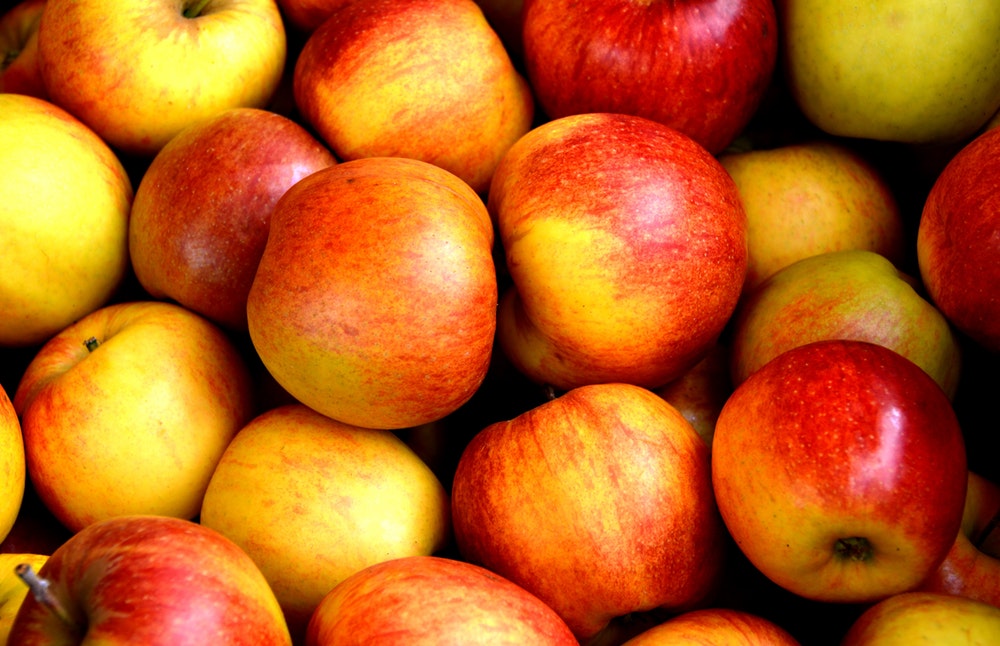
If there’s anyone who can brag about the benefits of apple cider vinegar (and often does), it’s me. From being a favorite instant heartburn/indigestion remedy of mine to its successful removal of a hideous mole from my back in just five overnight applications, I’m most definitely a diehard fan. But wait — there’s more! ACV is also useful in many other ways, including a treatment for acne. Let’s check it out!
Apple cider vinegar is uniquely suited to treat a variety of ailments, especially on the skin
According to Deborah Burnes, “Fermentation is used to make the (apple) cider into vinegar. During this process, bacteria and yeast break down the sugars in the cider. First the sugars are turned into alcohol, and when the alcohol ferments further, you get vinegar. The word vinegar comes from the French, meaning, “sour wine.” The main ingredient of apple cider vinegar is acetic acid, however it also contains other acids (lactic, citric and malic), vitamins, mineral salts, and amino acids.” In addition, the exfoliating properties in ACV essentially “digest” dead skin cells, says Burnes, creating a “mild cell turnover” widely used to “improve, soften, and smooth skin texture.”
Apple cider vinegar is a superior treatment for an assortment of skin issues
Turns out apple cider vinegar is beneficial for the skin in several ways, and for more than just clearing acne. For example, ACV has been known to successfully minimize age spots, calm razor burns, and diminish or prevent wrinkles. And while most ACV promoters recommend only using the organic, raw, and unfiltered/unpasteurized brands containing “the mother” (or making your own at home), I can tell you for some situations, in a pinch, the others might work just fine as well.
Forget the smell and focus on the results
Although apple cider vinegar is slightly stinky when compared to the fruity or more lavish scents of most store-bought skin products or cosmetics, you’ll get over the smell once you see the results. Why else would celebritieswho can afford the most expensive products in the world opt for plain old apple cider vinegar instead?
Here’s the scoop (you heard it here first)
Since apple cider vinegar contains naturally occurring alpha hydroxy acids (you know, the stuff they try to sell you in about a million different beauty products?), it acts effectively on skin when applied directly – making it a superior facial toner as well as an age-spot reducer when applied directly to the skin. It’s also an excellent PH balancer, antibacterial and antifungal agent, and a lightener of hyperpigmentation. It can reduce oily skin (hence the acne remedy) as well as reducing redness, helping to unclog clogged pores, and possibly even assisting to decrease the excess sebum production associated with acne.
The Easiest Recipe Ever
Ready to make your first batch of DIY acne treatment? Just mix equal parts apple cider vinegar to water, and voila. There’s your homemade ACV toner! (You might not want to tell your friends who buy the expensive alpha hydroxy formulas, as they might actually cry.) Now you can apply it with a cotton ball to your freshly washed skin and then rinse off with just plain water. Some might wish to apply a light moisturizer afterward to prevent excessive dryness, but most are just fine after simply rinsing the ACV off with plain water.
Serious Problematic Acne Sufferers, Here’s Your Part
*At this point, for those with problematic acne, you may want to try leaving the toner on to dry for some time. If your skin can tolerate it without becoming extremely dry, you can try leaving it on overnight. For those who get too dry that way, rinse it off after applying and let your skin breathe overnight. And if that’s still too dry, you can use a honey rinse or apply an oil-free hypoallergenic light moisturizer after rinsing the toner off and drying the skin.
Some folks have had good luck mixing concoctions for acne remedies such as apple cider vinegar and aloe vera for an acne healing facial cleanser, or apple cider vinegar and tea tree oil to boost the healing power and reduce inflammation for acne sufferers. There are also recipes for mixing ACV with Manuka honey or mixing it with witch hazel and lavender essential oil to fight acne here.
*As with all my articles, consult your physician (or in this case your dermatologist) before attempting DIY or home remedies of any kind.
Why and How to Make Super Cheap Easy Peasy Baking Soda Shampoo
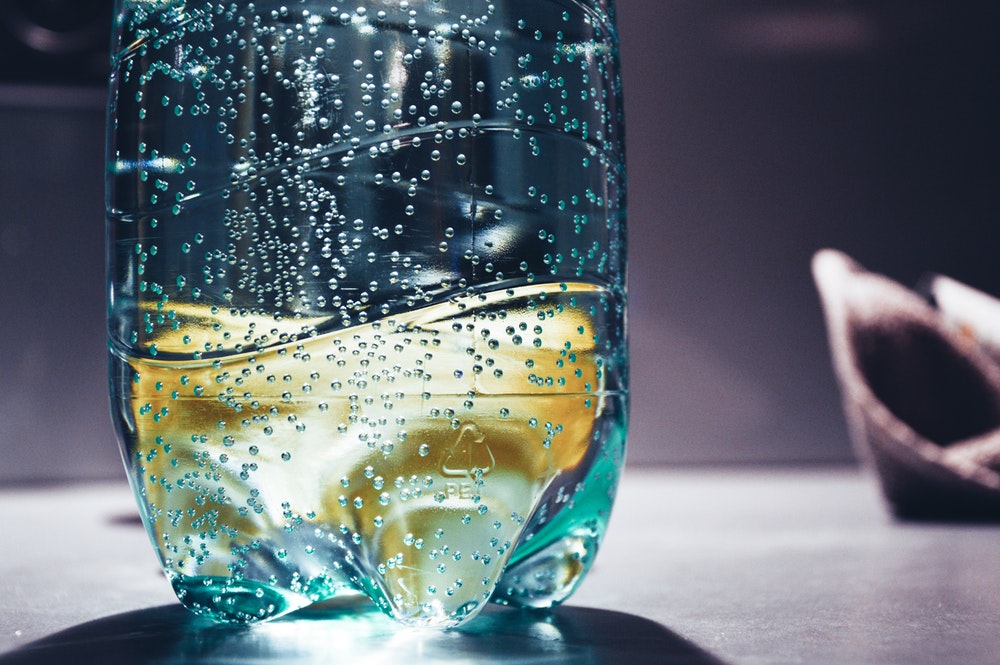
Why on earth would anyone want to wash their hair with baking soda?
Well, for one thing, using baking soda (sodium bicarbonate) on your hair is considered by some to be the oppositeof washing it (stay with me here). For those who prefer to avoid the unnecessary expense, natural oil-stripping chemicals, and unbelievable amounts of (likely) toxic fragrance involved with most store-bought shampoos, baking soda shampoo, also known as ‘poo-free or “no-poo” shampoo is the ideal solution. Some of the biggest unwanted elements you can avoid with ‘poo-free shampoo include DEA/Diethanolamine, sodium laurel sullfate, parabens, artificial color, scents, and dyes. In addition, baking soda shampoo helps prevent and treat dandruff when used regularly and doesn’t create build-up or residue.
But will it get my hair clean?
Yes and no. It will clarify your scalp, which is the root of the oils in your hair, and once this step is completed your hair is essentially clean. However, some sources indicate that repeated use of store-bought chemical-laden hair-stripping products may cause our hair to produce extra excess oil once we stop the habit. (Conversely, some find the opposite effect to be true in that they have drier hair than before stopping the chemical shampoos.) Both of these effects should only last temporarily, however, as your hair grows accustomed to the new situation, so don’t fret. Once your body adjusts to the missing chemical shampoo, it will stop making the excess oil (or dryness) and your hair will be naturally gorgeous in a way that might surprise you! On top of this, you may find you do not need to wash your hair as often as well, making just a few times per week sufficient for most people.
If you’d like to give it a try, grab a spoon, your baking soda (fresh preferred) and a glass of water. You will want to adjust the recipe as needed for your hair type and personal preferences, but for most people, an average tablespoon of baking soda mixed into one cup of water is perfect. Thicker, curlier, or more coarse hair may need a little more sodaand the very thin hair types may need less. *Please note: It’s important to remember to prepare your baking soda shampoo right before you plan to use it. Making it too far ahead of time can cause it to clump up.
Once it’s mixed up, pour it into a plastic bottle with a thin-tipped nozzle (a condiment bottle salvaged from the recycling bin might be just right). Then add a little more water once you’re in the shower ready to use it, and give it a good shake to mix again if it’s resettled. Some skip the first step and mix it directly in the bottle to save time, which is fine as long as you get the basic measurements right.
Then get your hair completely wet from scalp to tips and apply the mixture all over your scalp. Massage it in thoroughly and gently, then rinse out thoroughly. Once this is complete, your hair has been naturally cleansed. You won’t need to spend much time at all, if any, on the length of your hair as your primary area of concern is the scalp which produces the oil.
Some keep it even simpler and make a baking soda paste with one part baking soda to three or four parts water. This is scrubbed into the hair and scalp and allowed to sit for up to minutes, then thoroughly rinsed.
At this point, many no-‘poo method lovers do essentially the same thing with apple cider vinegar (one tablespoon vinegar to one cup water ratios) to balance out the baking soda and act as a natural “conditioner.” Some prefer to use lemon juice instead, which is equally acidic and causes the same results as the ACV. If you’re looking to add moisture to dry hair, you can also try using aloe or honey in place of the ACV step for a conditioner.
After some time has passed with using the baking soda shampoo/apple cider vinegar conditioner routine, some claim to be able to wash their hair less and less, sustaining the clean feeling longer and using just water between washings.
Caution: Please use caution to avoid getting the baking soda and/or apple cider vinegar into your eyes. This is especially important if you use the products on children, as these are not “no-tears” recipes. For active children, you may want to try a shampoo visor to help prevent contact getting the shampoo into the eyes.
The Healing Benefits of a Raw Food Diet
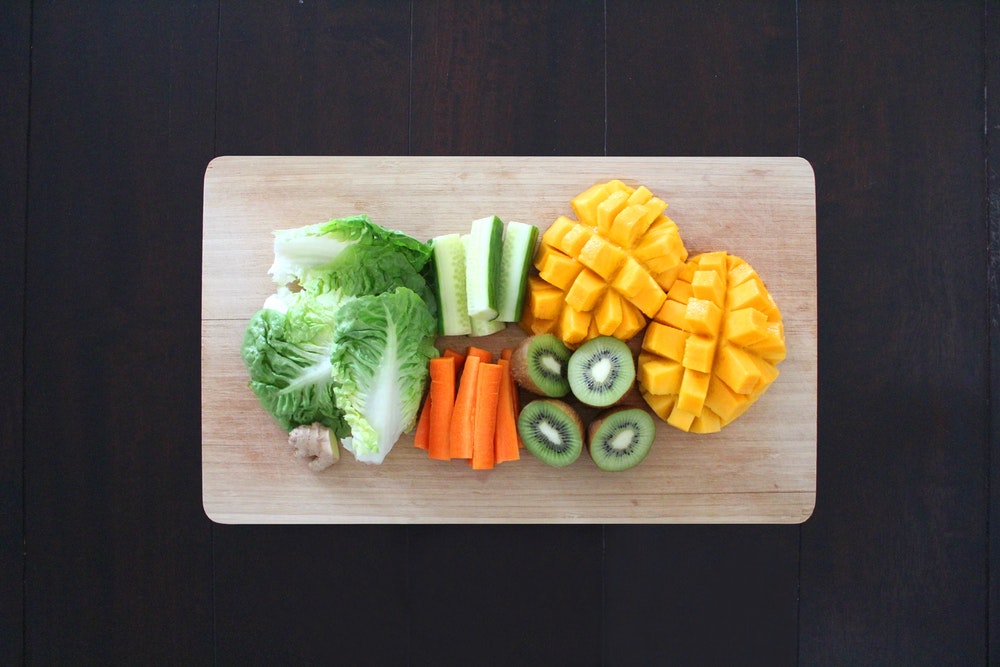
Why Try a Raw Food Diet?
Although some refer to the raw diet as the “anti-diet”, and prefer to call it a lifestyle promoting the consumption of whole foods in their natural state, the raw food diet has in any case spread like wildfire since its inception. Raw food in its purest form, fresh-picked from the tree or pulled out of the garden, is believed by advocates to brim with naturally present enzymes and nutrients easily absorbed by and beneficial to the body. In their opinion, it is and has always been the ideal food for the human body. In addition to the simple goals most of us have of just looking and feeling great, raw foodistsboast of numerous other health benefits from the lifestyle as well.
The Health Benefits are Vast and Varied
Improved digestion and heart health, revitalized liver function, prevention or the successful treatment of illnesses or health problems including constipation and cancer, clearing the skin up, preventing nutritional deficiencies, eliminating harmful toxins, and maintaining a healthy weight name just a few of the lengthy list of advantages they’ve experienced. According to staunch raw food advocates, when the body uses the foods it was naturally designed to consume, the process of healing itself begins.
The History of Raw Foods
With that in mind, we can trace the current trend toward raw foodism all the way back to the late 1800s when it was discovered that eating raw apples cured the jaundice of Dr. Maximilian Bircher-Benner. From that moment forward came all sorts of tests and experiments intended to measure the value of raw foods upon human (and other animal) health.
So Raw Food Caught On… and Continued
The premise continued from the Bircher-Benner discovery, that participants eat a variety of foods including fruits, vegetables, nuts, herbs, seeds, sprouts, sea vegetables, and other foods – but only in the raw – in order to obtain (or regain) optimal health. No cooking of any kind is allowed on a raw food diet as it destroys nutrients – nor any microwaving, GMO foods, caffeine or exposure to herbicides/pesticides during or after the growing phase.
Joe Cross Learned and Shares How to Use Raw Foods to Fix Our Sick Bodies
Made popular recently by the documentary Fat, Sick, and Nearly Dead (free on Hulu now), the foods consumed by the movie’s star Joe Cross featured only raw juiced fruits and veggies for 60 days — which took him from being 100 pounds overweight, exhausted and guzzling prescriptions for an autoimmune disease to bursting with energy and vitality at his ideal weight. But once Joe regained his own health, he didn’t just stop there. He went on to find others who struggled with their weight and health like he did, and helped them to get healthy as well by using the same raw food methods. He now provides daily updates and articles written on the latest raw food trends and recipes on various social media including his own website, Reboot with Joe.
So Basically…Just Cut the Crap
In other words, junk food, pastas and pastries are out the door – but you won’t miss them a bit once you experience how great you feel! While some stick to a purely 100 percent raw food diet for a short period, most tend to implement some combination of cooked foods if applied over time. With the American lifestyle in mind, this combined version seems easiest to adhere to without growing overly frustrated. Most advise purchasing a blender or juicer (The famous Nutri Bullet or other similar types are very popular as well as great at extracting valuable nutrients from your produce) in order to both extract nutrients and also vary the diet with different flavors and blends. Store-bought fruit and veggie juices are generally off limits due to additives, but fresh homemade juices are encouraged. A good number of raw foodies are vegan, but there are others who also incorporate raw animal products like raw milk or cheese (unpasteurized), dried organic legumes (like lentils, mung beans), raw meat, and raw fish.
Are There Any Risks to a Raw Food Diet?
Some advise staying away from the raw food diet if you have a particularly sensitive gut. For example, those with ulcerative colitis may have trouble with a large amount of raw foods passing through consistently. In addition, some foods are better for you when cooked, at least slightly, such as cruciferous vegetables (like broccoli) and foods containing lycopene and beta carotene, so raw foodists at 100 percent raw might miss out on such nutrients from those items. Of course, with raw meats and other non-produce items, there is always the risk of sickness so proceed with the proper degree of caution. Overall, however, the diet seems highly beneficial.
Why and How To Do The Optimal 3-Day Cleanse
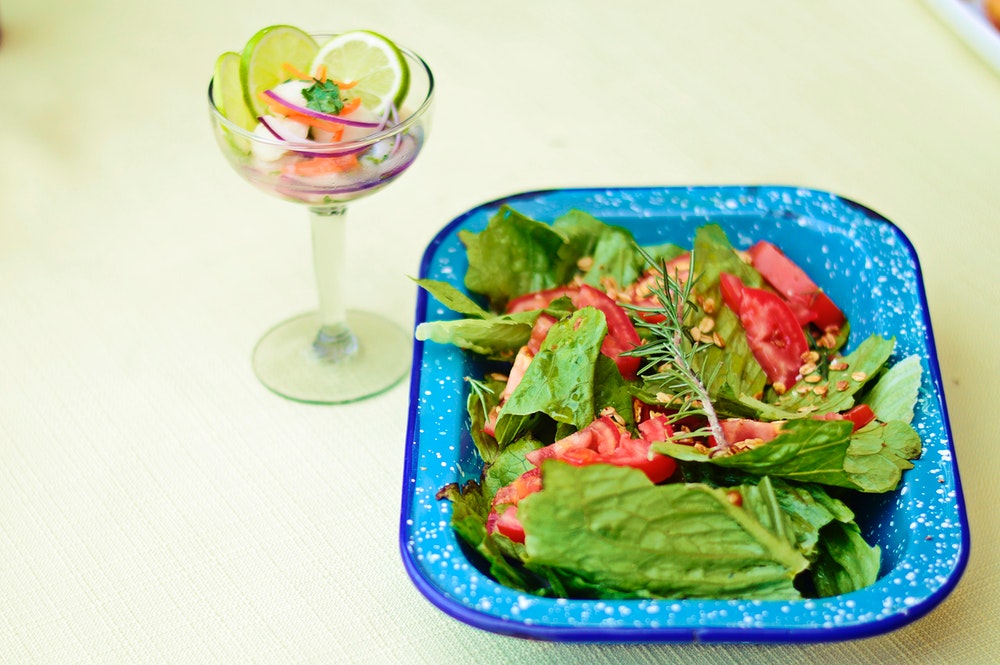
The Optimal 3-Day Cleanse
What is a 3-Day Cleanse and How Can I Do It?
While numerous types of “3-Day Cleanse” detoxification diet variations exist today, the most well-known type is considered to be a structured program best done either on a long weekend (from Friday through Sunday) or otherwise during vacation time or similar “off days.” The premise for the cleanse in general is that the body needs a chance to take a break from the normal diet’s toxins in order to “relax the liver, detox the kidneys and adrenals, and enhance digestion.” Although some detox programs recommend longer periods of time to cleanse for different goals (i.e. a 12-day colon cleanse, a 48-hour liver cleanse, or a 10 day blood cleanse), a general 3-day program works well for many and fits easily into the schedules of busy people.
The Dr. Oz 3 Day Cleanse
One example of a simple 3-Day Cleanse was made popular recently on the Dr. Oz show, with the essential program laid out on his website including a shopping list and recipes. According to Oz, “When a detox is done right, it’s just another word to describe a diet rich in whole foods. By removing artificial flavors and chemical substances from your diet, you’re helping prepare your body to live a healthier and more natural lifestyle.” The foods recommended on the show’s website include items that work together synergistically with the greatest combination of vitamins, minerals, fats, etc. that allow the body to absorb nutrients optimally.
The Yoga Journal 3 Day Detox Cleanse
Another similar variation encourages detoxers to take a week or longer ahead of the cleanse to observe their typical eating patterns. Do you eat a substantial amount of salt-laden snacks, heavy syrups, chemically-flavored processed dinners, or sugary drinks? You may consume considerably more toxins than you realize until you begin to consciously observe your own habits. After the observation period, try to choose a few key items you’d like to eliminate (or substantially reduce) during the cleanse and begin cutting them out a little at a time as much as you are able.
Replace Cravings for Junk Food with Whole, Real, Nutritious Foods
Of course, you’ll also need to replace them with healthier options on the cleanse as well, so you won’t feel deprived or be without sufficient nutrition. If you eat a lot of salty pretzels, for example, you may want to grab a tin of whole, raw almonds to snack on instead. If you like sweet fruity candy, try a strawberry smoothie when the craving hits. (Cravings, in this case, refers to an unhealthy craving we’re trying to overcome; there can be healthy cravings as well which would indicate a nutrient your body actually needs in a healthy person, but those will become more clear after the detox process is complete.)
Overall, try to maintain a primarily whole food diet throughout the cleanse, leaving out stimulants, alcohol, pharmaceuticals of any kind (unless your doctor disagrees – please ask them first), unnecessary chemicals you can avoid (i.e. MSG when it’s written on the label), meats of all kinds, dairy of all kinds (cultured dairy, like plain yogurt, is better than the rest if you must consume dairy), fried foods of all kinds, processed foods of all kinds (this includes packaged boxes of mac and cheese, McDonald’s, and anything from fast food in general) and sugars (other than fresh fruits) while pulling in as many fresh vegetables and fruits as possible.
Don’t Let Yourself Get Too Depleted or Wiped Out
Some experts recommend eating or drinking something, even something as simple as lemon water, every 90 minutes to remain balanced during the detox. Herbal tea, a small organic apple, a shot of wheat grass juice, or a cup of refreshing coconut water are all rejuvenating and specifically good to have on hand. There are also numerous different versions offering meal plans for each day as well as simple, healthful recipes you can use as well.
Another Option: The 3 Day Juice Cleanse
A third option is the 3-Day Juice Cleanse, which includes raw, organic juices and possibly some smoothies, vegetable broth, and vegan snacks to ward off unhealthy cravings. There are three days of juices consumed as well as a period of preparation for the cleanse and up to a week of reintroducing foods for this variation as well.
Regardless of which type of cleanse you choose, if you stick with it for the full 3 days, you’re likely to enjoy its benefits immensely. From there, you’re less likely to even crave the unhealthy foods at all, so you’ll likely reach for them less – a win all around!
Functional Medicine’s Comprehensive, Customized Approach to Health Care
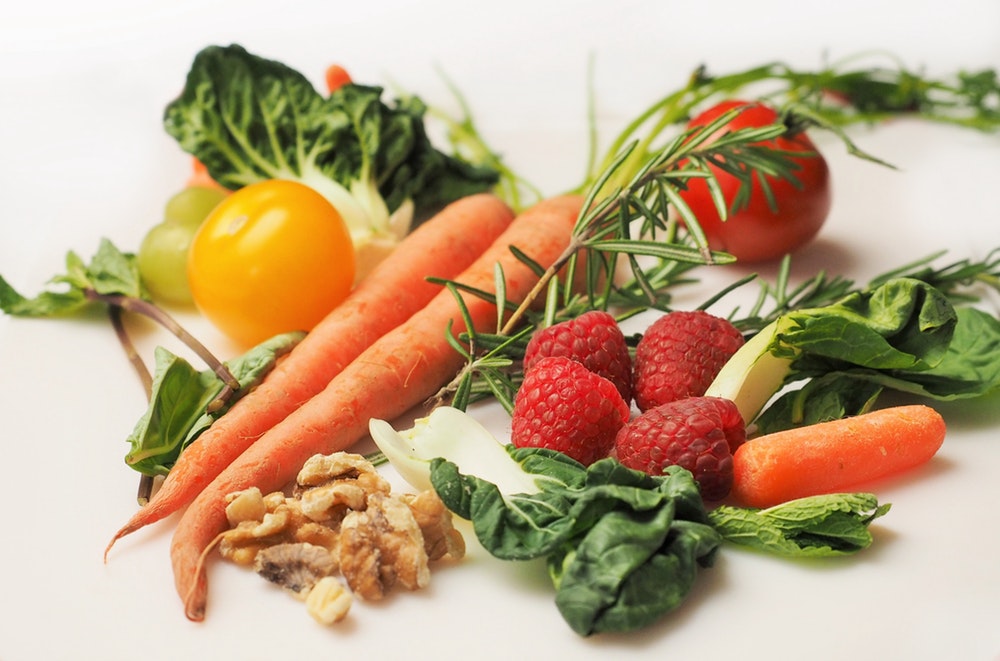
At a time when conventional health care in the United States is under greater scrutiny than ever, the concept of functional medicine has emerged with a new and different approach entirely. With a greater focus on the underlying, root causes of illness from a tailored, individualized perspective, this form of alternative health care is growing more popular by the day. Let’s take a look at why!
What is “Functional Medicine?”
To summarize, we looked first for a definition of the practice from the Institute for Functional Medicine website. There it is stated, “The Functional Medicine model is an individualized, patient-centered, science-based approach that empowers patients and practitioners to work together to address the underlying causes of disease and promote optimal wellness. It relies on a detailed understanding of each patient’s genetic, biochemical, and lifestyle factors and leverages that data to direct personalized treatment plans that lead to improved patient outcomes. By addressing root cause, rather than symptoms, practitioners become oriented to identifying the complexity of disease. They may find one condition has many different causes and, likewise, one cause may result in many different conditions. As a result, Functional Medicine treatment targets the specific manifestations of disease in each individual.”
This sounds great, but one may wonder: Why is it considered “alternative”? Don’t “regular” doctors do that too?
Measured against a system that essentially tests for illness according to its corresponding to a matching pharmaceutical medication, functional medicine may seem a bit odd. Doubtlessly, nutrition and lifestyle play a much greater role in functional medicine than in conventional care – while pharmaceuticals may seem to play less of one. However, both are utilized in combination with a comprehensive health history and a timeline mapping of issues related to the patient’s current health. In addition, it may take longer for results, require more one-on-one time with physicians, and be less attractive to insurance providers than other forms of health care.
But does it work? Most who support it say yes, and they say so emphatically.
The Cleveland Clinic is trying out their own “Center for Functional Medicine”
One collaboration between Dr. Mark Hyman and the Cleveland Clinic has culminated in the Clinic’s Center for Functional Medicine, described here as having the premise of promoting “the ability to optimize function.” This goal explores numerous interacting body systems and symptoms of underlying problems found within them, including “biochemical abnormalities, nutritional deficiencies, viral patterns present in the body, G.I. tract and gut dysbiosis, and immune system dysfunction.” The Clinic then follows this with treating any of such findings with medication and diet/nutrition/lifestyle management. Says Dr. Aunna Herbst of the Clinic, “We look for a root cause and restore balance so that the body can function really well.”
Our Current Health System Ranks Poorly
Additionally, according to Dr. William Cole, the current U.S. conventional medical care isn’t the highest ranked on health care provision in the world anyway. In a October 2014 MindBodyGreen article he shared that, “According to a comprehensive study by the Institute of Medicine and the National Research Council, American men ranked last in life expectancy, and women were ranked second to last. When it comes to the health of a pregnant mother or her child, the U.S. has the highest mortality rate among all developed nations. The U.S. also has the third-worst mortality rate from nutritional deficiencies, and the highest absolute age-adjusted mortality rate among all developed nations!”
With this in mind, patients may do well to consider alternatives to such a seemingly insufficient, simplistic orientation with the new options and practices coming on the scene. Functional medicine alternatives to the “cookie cutter approach” of mainstream medicine may offer greater success to those struggling, since according to Dr. Hyman, “one health condition can have many different causes and how one symptom or cause can lead to many different conditions.”
Ancient Wisdom Meets Modern Advancement
And judging by the age-old wisdom of Greek physician Hippocrates, considered to be the Father of Modern Medicine, with the statment, “Let food be thy medicine, and medicine thy food,” this trend appears to indeed be on the right path. Followed up with Thomas Edison’s prediction for the future of health care uttered over a century ago, “The doctor of the future will give no medicine, but will instruct his patient in the care of the human frame, in diet and in the cause and prevention of disease,” it seems that functional medicine is right on time.
The Health Benefits of Water Fasting
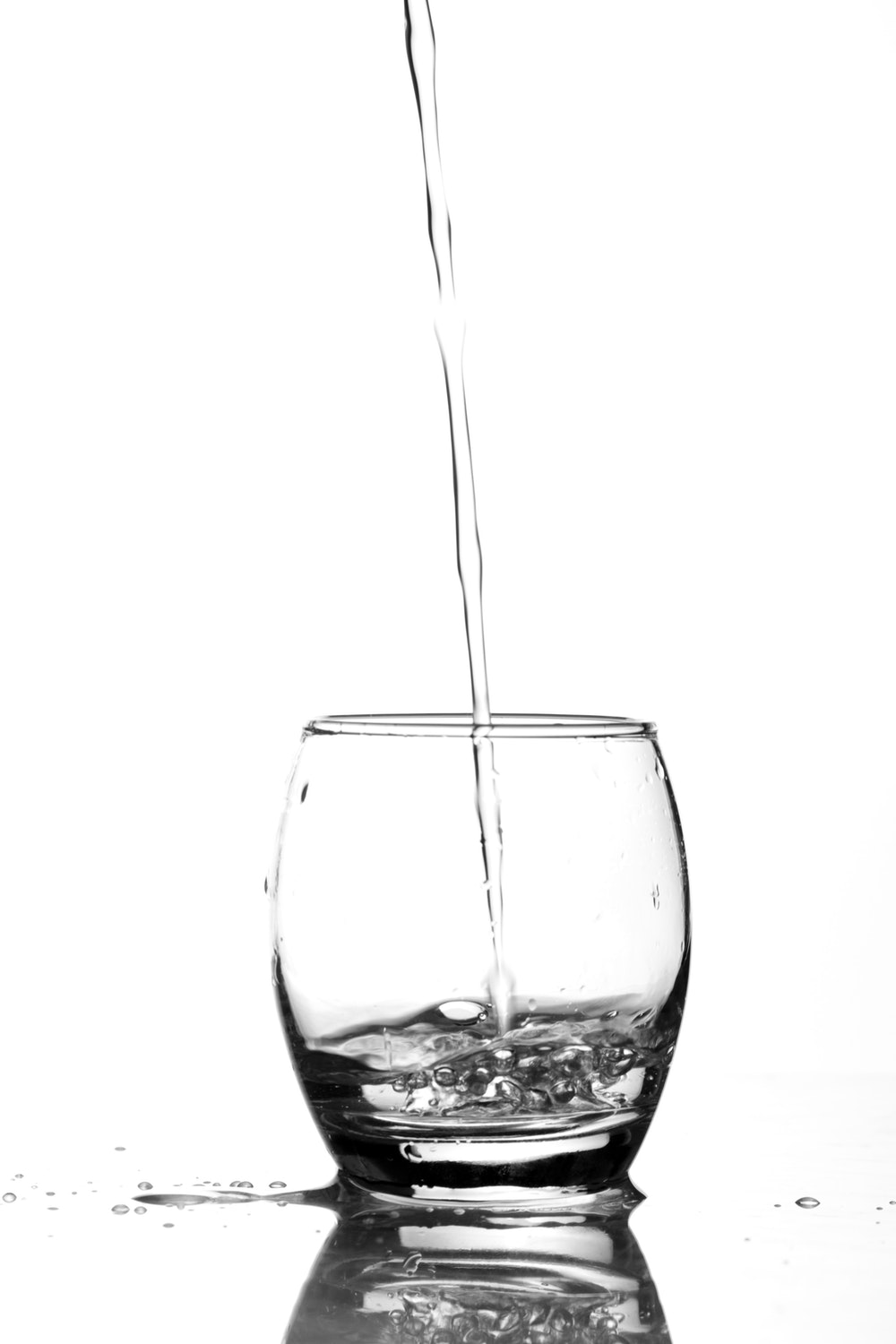
Is a water fast worthwhile?
Very few people would even consider attempting any type of severe caloric restriction at all, let alone a fast consisting only of water. But, believe it or not, some folks are sold on the concept of water fasting — not only trying it once, but incorporating it (even for extended amounts of time — like 40 days!) into their lifestyles. They claim it’s an excellent way to detoxify the body due to the body’s “self-cleaning” mechanisms which, simply put, come into play when the energy expended on food digestion is halted. Health benefits like reducing the symptoms of (and even reversing entirely) several types of illnesses through improved immunity, lowering blood pressure, improving mental clarity, improving vision, weight loss (although it should not be done solely for weight loss purposes), and relief from toxic contamination have all been reported. Of course, there can also be numerous health risks involved with such an endeavor as well, so be sure to consult your physician prior to attempting a water fast yourself
If you’d like to give it a shot, there’s a lot to learn first. The body goes through many changes during a fast with which most people aren’t familiar, so it’s extremely important to prepare well, read up, and preferably connect with a buddy to help monitor you along the way and motivate your fast. When you’re ready, check out some authorities on the subject:
Keep in Mind: It’s NOT for Everyone
The first rule is clearly stated to be:
Water Fasting is NOT for Everyone — Nor is it Appropriate at all Times.
Even though some sick patients reported health improvements after fasting, not all health conditions can tolerate a fast. For those under doctor supervision (who have notified their doctor of their fast beforehand) or those healthy enough (and informed enough) with fasting in general to attempt a water fast, the resulting improvements are often impressive. While most beginners try for a single day’s water fast for starters (which is the length I’ve tried first personally), others with more experience opt for for a standard three day water fast, while the experts take things up a notch and go longer. Let’s first explore what you’ll need to keep in mind as you prepare for your water fast.
Why and How Does It Work?
Understanding the premise of a fast is paramount so that you’ll know what to look for as the changes take place within your body. Since fasting in general has been shown to promote health benefits of its own as well, let’s first consider the findings of recent work in the laboratory on what occurs scientifically during a fast. Says Valter Longo, Director of the USC Davis Longevity Institute, “When you starve, the system tries to save energy, and one of the things it can do to save energy is to recycle a lot of the immune cells that are not needed, especially those that may be damaged.” During the cycles of fasting Longo observed in his studies, he found changes often occurred which “trigger stem cell-based regeneration of new immune system cells.” Hence, the body essentially “eats” the older, damaged cells and replaces them with new ones.
Consider Water Quality
When you’re starting a water fast, keep your water quality in mind. A good water filter is essential to a good, healthy water fast. If you can get a Berky water filter, they are rumoured to be exemplary and perfect for water fasting. Although they are quite pricey to some, other types of filters can work well also, as well as water diffusers and filtering water pitchers.
The Experience of Detoxification Can Be VERY Unpleasant
For those unfamiliar, detoxifying the body can bring the bad before the good. (Think about how you feel when you’ve gone without that morning cup of coffee too long, and multiply it) Chances are you’ll feel worse (and often much worse) before you start to get the results you’re looking for from a fast or detox of any kind. Your body is managing the cravings of things it’s addicted to, on top of eliminating things that are harmful, which can cause everything from headaches to nausea and dizziness. Plan on experiencing some intense hunger at the very least — but drinking the water helps with this. Report symptoms to your doctor and fasting buddy as you experience them to make sure they are normal.
Reintroducing Food Can Be Tricky
After your digestive system has shut down during a fast, it takes time and the appropriate amount of care to reintroduce food properly. According to some fasters, “Eating solid food before your body is ready can lead to severe discomfort and even hospitalization” – so pay attention! You’ll want to consider how long you’ve fasted and reintroduce foods as appropriate. For longer fasts (generally those lasting longer than three days), fresh fruit juice may be a good reintroduction food, taken in sips first, and then later gradually adding in small amounts of fresh fruits, steamed veggies, and so on. The entire process of reintroduction can take anywhere from a few days to two weeks, so listen to your body and stock up on the stuff you’ll need.
Be Sure You Get Enough Rest
You must remember your body is going through stressful changes it isn’t accustomed to, so resting is of primary importance. Lie down, put your feet up, and breathe whenever you feel tired or ill along the way.
Join a Group
Some have explored the benefits of fasting, as well as water fasting, through various groups and other sources easily found in an internet search. Groups on social media or in real life can be very helpful when you’re new to the fasting world. Another great intro to the subject can be enjoyed in the documentary Eat, Fast, and Live Longer, the basis of which previously aired on BBC.
*CAUTION: As with any diet or health strategy recommended in my articles, please consult your physician first. I am not a doctor. Some people may develop serious health problems attempting any type of fasting or dietary changes outside of a doctor’s care so PLEASE consult your physician before attempting a water fast for any length of time. Also, please do not attempt a water fast if you have an eating disorder.
What You Need to Know about Candida

What is candida and why do I need to know about it?
According to WebMD, Candida Albicans is a (typically) harmless yeast infection which can be most often found in the intestinal tract, vagina, or mouth regions. A fungus called Candida “causes an infection called Candidiasis, which is most often of the Candida Albicans variety. Candida infections are rarely serious in otherwise healthy people. In rare cases, it may spread through other parts of the body if the patient’s immune system is not functioning properly. In most severe cases, it can affect the blood, the membrane lining of the heart muscle (called endocardium), or membranes around the brain (called meninges).” Although Candida Albicans can normally live in small numbers in the body without problems, as it is well-regulated by other healthy bacteria, certain situations can result in an overgrowth of it, with issues to follow. Symptoms can be anything from itching to aching, bloating and gas, skin breakouts and/or rashes, strange hormonal cycles, and fatigue.
But what causes it?
Although many causes are named in creating this imbalance of the gut’s microbiome, some are consistently to blame. Prolonged use of prescribed antibiotics, poor digestion, heavy stress or emotional upsets, impaired immunity, overconsumption of sugar, C-section deliveries, overconsumption of alcohol and/or coffee, mercury exposure from a variety of sources, antibiotics in the meat supply, and extended birth control use are a few of the main culprits, but don’t fret — most of these can be effectively treated with natural remedies. Follow along!
Step One:
The first step to overcoming any bout of Candidiasis is to stop consuming sugar — completely. Wellness Mama says sugar, being as addictive as it is and so very well hidden in our food products, is not easily avoided — but it must be. In addition, the infected person must avoid milk, cheese, flour (especially refined, white flour), fruit of all kinds, yeast-containing foods (like peanuts, melons, and alcohol), as well as any foods to which the individual is especially sensitive. This is how you starve the yeast, as these items are their “food.”
Step Two:
The next step is to kill off the yeast. Yep – we need to kill it. A number of antifungal herbs may be used in an alternating fashion, including berberine, olive oil leaf, and grapefruit seed extract. These are typically combined with caprylic acid which is effective at killing off the fungus. This step in the process may end up taking months sometimes — try to be patient and stay in good contact with your doctor, especially if things should happen to worsen.
Step Three:
After that, Maura Henninger, N.D., recommends “repopulating the gut.” Probiotics, rotated monthly, should be introduced as “good bugs” to the gut in order to scare away the “bad bugs” causing the infection.
Make Sure You Poop Regularly
Says Henninger also, probiotics encourage healthy and regular bowel movements, which also helps eliminate the bad bugs. In order to further ensure good BMs, Dr. Maura suggests taking additional fiber in the form of flax seed, chia seeds, guar gum, and psyllium husks in salads and smoothies, as well as increased fermented foods like sauerkraut, yogurt, acidophilus capsules, coconut water, kefir and kimchi. (In the case of vaginal infections, some women have had good luck with inserting plain yogurt into the vagina as well — but be sure to consult your physician before trying it yourself) You may also want to try taking enteric-coated capsules of oregano oil, peppermint oil, enteric-coated garlic, or others.
Step Four:
Support the liver as it works hard to detox your body over this time. Drink plenty of water and try some liver supporting biotherapeutic drainage or milk thistle.
Step Five:
Support yourself emotionally, as some think emotional upsets can contribute to prolonged illness of many varieties, this included.
Some practitioners warn of a phenomenon some have endured during these steps called a “die-off”, while others doubt its very existence. The believers warn that as problem bugs die off, they can release “protein fragments and toxins which can trigger an antibody response in the body” and a possible worsening of symptoms. For those who are concerned, or who worry of the possibility, a more gradual approach to the steps may be taken, or in individualized program of diet and supplements.
As with all articles presented here, please consult your physician for any and all health ailments before attempting to treat it at home with our suggestions.
